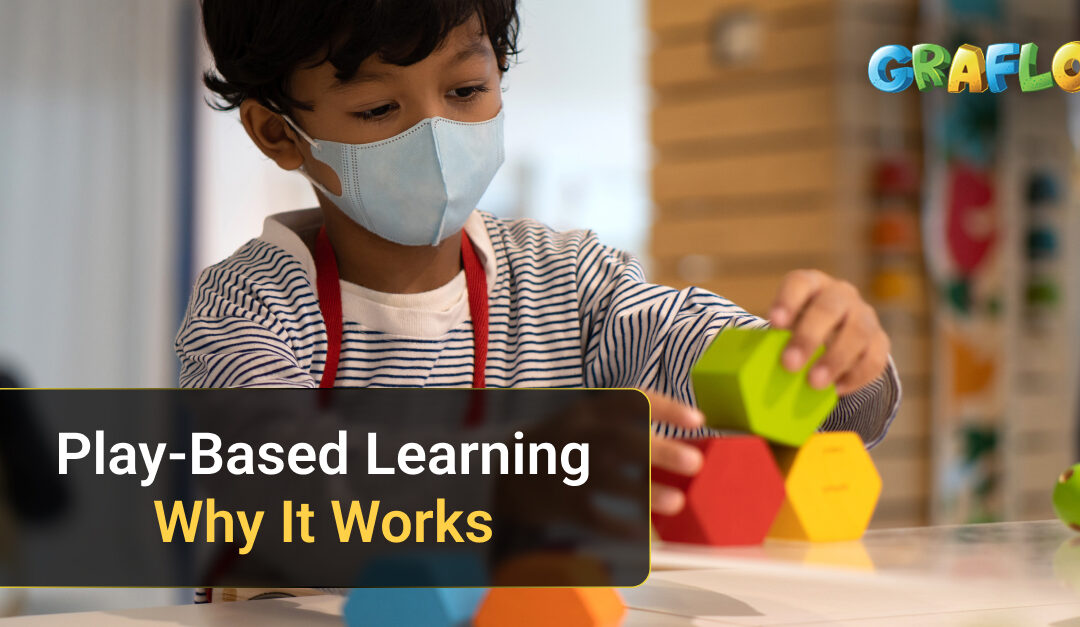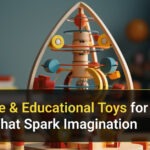When we think about learning, many of us picture classrooms, textbooks, and teachers giving lessons at the board. But learning doesn’t have to be confined to rigid structures or memorization. In fact, some of the most effective and joyful learning happens when children play. That’s the essence of play based learning, an educational approach that combines play and structured learning experiences to foster curiosity, creativity, and cognitive development.
This concept isn’t new, but it’s gaining renewed attention from educators and parents worldwide. As research continues to highlight the connection between play and brain development, schools and early childhood programs are increasingly adopting play-centered methods. Let’s dive deep into why play-based learning works so well, what makes it unique, and how it shapes children into curious, confident learners.
What Is Play Based Learning?
Play based learning is an approach that uses play as the primary way children explore ideas, develop skills, and make sense of the world. It combines the natural joy of play with purposeful educational outcomes. The key difference between random play and play based learning is intention. While children feel like they’re simply playing, educators design activities to encourage specific learning goals, such as problem-solving, social interaction, literacy, or numeracy.
For instance, when children build a tower with blocks, they’re not only having fun, they’re learning physics concepts (balance, gravity), developing fine motor skills, and enhancing collaboration if they’re working with peers. The teacher observes and guides subtly, helping children reflect and deepen their understanding without interrupting their natural curiosity.
The Science Behind Play and Learning
Neuroscience and developmental psychology both support the idea that play is essential for healthy brain growth. Play activates multiple regions of the brain, strengthening neural pathways that support memory, language, and executive function.
When children engage in hands-on play, they’re practicing cognitive flexibility, learning to adapt, thinking creatively, and solving problems in new ways. Moreover, the joy and engagement that come with play trigger dopamine release, enhancing motivation and retention.
Through learning toys, kids experience active engagement rather than passive absorption of facts. They interact, imagine, question, and create. This kind of learning fosters both cognitive and emotional intelligence, setting a strong foundation for lifelong curiosity and resilience.
Key Benefits of Play Based Learning
1. Encourages Creativity and Imagination
Play gives children the freedom to experiment without fear of being wrong. Whether they’re pretending to run a restaurant or inventing new games, they’re learning how to think outside the box. This imaginative play nurtures innovation and divergent thinking, skills that are crucial in adulthood, too.
2. Develops Problem-Solving Skills
In play based learning, every activity presents opportunities for problem-solving. When a child’s block tower collapses, they instinctively try again, testing new ways to make it stand. This trial-and-error process builds persistence and critical thinking.
3. Builds Social and Emotional Intelligence
Collaborative play teaches children how to communicate, share, negotiate, and empathize. They learn to understand different perspectives, manage conflicts, and regulate emotions, all through playful interactions.
4. Supports Physical Development
Active play helps children develop coordination, balance, and motor skills. Even indoor learning setups that involve movement or manipulation of objects stimulate physical awareness and strength.
5. Enhances Language and Communication Skills
Through role play and storytelling, children expand their vocabulary and learn sentence structure naturally. Teachers can enhance this by engaging in conversations during play, introducing new words, and modeling expressive communication.
How Play Based Learning Differs from Traditional Learning
Traditional classrooms often emphasize structured lessons, memorization, and teacher-led instruction. Play based learning, on the other hand, focuses on exploration and discovery. Instead of being told what to learn, children find out through doing.
Here’s how it differs:
- Role of the Teacher: In traditional learning, teachers lead; in play based settings, teachers facilitate.
- Role of the Student: Traditional students receive information; play based learners construct knowledge through experiences.
- Learning Environment: Traditional classrooms prioritize order; play based environments encourage flexibility and creativity.
The result is a deeper understanding, higher engagement, and stronger emotional well-being. Children learn not just facts but how to learn, a skill that carries them far beyond early education.
The Teacher’s Role in Play Based Learning
One of the most misunderstood aspects of play based learning is the assumption that teachers simply let children play without guidance. In reality, teachers play a vital role as observers, facilitators, and co-learners.
They design activities with clear learning outcomes in mind but allow flexibility for children’s interests to shape the experience. Teachers might pose open-ended questions like “What happens if we use this block instead?” or “How can we make the water flow faster?” to encourage critical thinking.
They also observe children’s interactions to assess development, identify strengths, and provide support where needed. This balance between freedom and structure makes play-based classrooms dynamic and responsive to each child’s needs.
The Role of the Environment
The learning environment is often called the “third teacher.” A thoughtfully designed environment stimulates curiosity and creativity.
Classrooms or play areas should be organized with a mix of materials, blocks, sand, art supplies, books, natural objects, and sensory tools, inviting exploration. Each item serves a purpose, allowing children to engage multiple senses and connect concepts through touch, sound, and movement.
Outdoor spaces are equally important. Nature-based play, such as collecting leaves, building forts, or watching insects, connects children to their surroundings and enhances observational and scientific thinking skills.
Play Based Learning Across Age Groups
Early Childhood (Ages 3–6):
This is the prime stage for learning through playing. Young children naturally learn through play; pretend games, construction toys, and creative art all nurture foundational literacy, numeracy, and social skills.
Primary Years (Ages 6–10):
As children grow, play evolves into more structured, rule-based games and problem-solving tasks. Teachers can integrate play into science experiments, math puzzles, or language games to keep learning engaging and relevant.
Older Children and Beyond:
Even adolescents and adults benefit from playful learning experiences. Simulations, role plays, and collaborative challenges can make complex subjects more understandable and enjoyable. The spirit of play, curiosity, and experimentation remains valuable at every age.
Real-World Applications: Where Play Meets Learning
Play isn’t just a classroom tool; it’s a proven method in many real-world educational systems. Finland, for example, is famous for its play-centered early education model, which produces some of the world’s most successful students.
In the U.S., many early childhood programs incorporate play based learning to promote school readiness without pressuring children into rote memorization. Montessori and Reggio Emilia philosophies also align closely with play based principles, emphasizing independence, exploration, and self-expression.
Even in STEM (Science, Technology, Engineering, and Mathematics) education, play is used to teach abstract concepts through experimentation, like using building blocks to understand engineering or coding robots through games.
Parental Involvement: Extending Play at Home
Parents are children’s first teachers, and their role in fostering playful learning is crucial. Simple activities like baking cookies, building with LEGO, or gardening can turn into powerful learning experiences.
Here are a few ways parents can support play-based learning at home:
- Encourage Open-Ended Play: Provide toys that can be used in multiple ways, such as blocks, dolls, or art materials.
- Ask Questions: Instead of instructing, ask “What do you think will happen if…?” to stimulate critical thinking.
- Limit Screens: Encourage hands-on exploration rather than passive digital entertainment.
- Join In: Play alongside your child to strengthen bonds and model curiosity.
When home and school environments align around the idea of learning through play, children thrive academically, socially, and emotionally.
The Future of Education Is Playful
In a rapidly changing world where creativity, adaptability, and emotional intelligence matter more than memorized facts, play-based learning offers a future-ready approach. It cultivates the skills modern learners need: collaboration, communication, innovation, and resilience.
By integrating play into structured learning, educators prepare children not only to succeed in school but also to thrive in life. They learn how to think, how to connect, and how to find joy in discovery, skills that will serve them far beyond childhood.
Final Thoughts
Play isn’t just a way to pass time; it’s the most natural and powerful form of learning. Through play based learning, children explore the world, test their ideas, and develop critical life skills without even realizing they’re learning.
As educators, parents, and caregivers, embracing play means respecting the way children learn best, through curiosity, movement, imagination, and joy. When learning feels like play, it becomes something children want to do, not something they have to do.
So, the next time you see a child deep in imaginative play, remember: real learning is happening right there.






